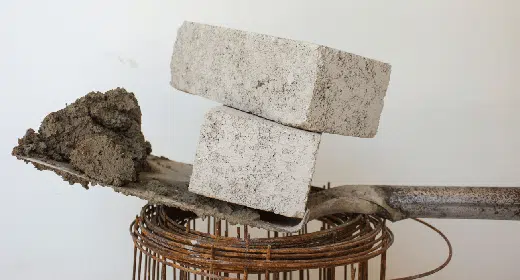by Irina Ivanova: Cement is the most widely used substance on Earth. When mixed with water, it forms concrete that becomes the backbone of buildings, roads, dams and bridges.
 But the cement industry is responsible for about 8% of planet-warming carbon dioxide emissions — far more than global carbon emissions from aviation. If the cement industry were a country, it would be the third-largest emitter of carbon dioxide in the world, after the U.S. and China.
But the cement industry is responsible for about 8% of planet-warming carbon dioxide emissions — far more than global carbon emissions from aviation. If the cement industry were a country, it would be the third-largest emitter of carbon dioxide in the world, after the U.S. and China.
One startup seeks to change that. At the California-based company Brimstone, CEO Cody Finke and his team in Oakland have discovered a potentially game-changing solution: the world’s first carbon-negative cement, made from calcium silicate rocks.
“We’re just making the same thing from a different rock,” Finke told CBS News.
According to Finke, calcium silicate rocks are about 200 times more abundant than limestone, which is traditionally used to make cement.
Limestone contains calcium, the binding agent in cement. But it also contains carbon dioxide, the main greenhouse gas rapidly warming the planet. When it is superheated inside a kiln to about 2,700 degrees using piles of coal, that process releases tons of carbon dioxide into the atmosphere.
The kiln is “really the heart of the cement plant,” said Steve Regis, who runs cement operations for the CalPortland Oro Grande Cement Plant in Southern California.
Regis argues that concrete is a time-tested and reliable building material, and the industry is working to make it cleaner.
Brimstone is attempting to rapidly scale up its innovation thanks to big backers like Bill Gates’ Breakthrough Energy Ventures and Amazon’s Climate Pledge, claiming it will be cheaper and just as reliable as traditional cement.
Finke said that even if buildings and roads have not yet been built using calcium silicate rocks, the ingredients are chemically and physically identical.
“We’re quite confident that the chemistry works and we can make the same material,” Finke said.







































